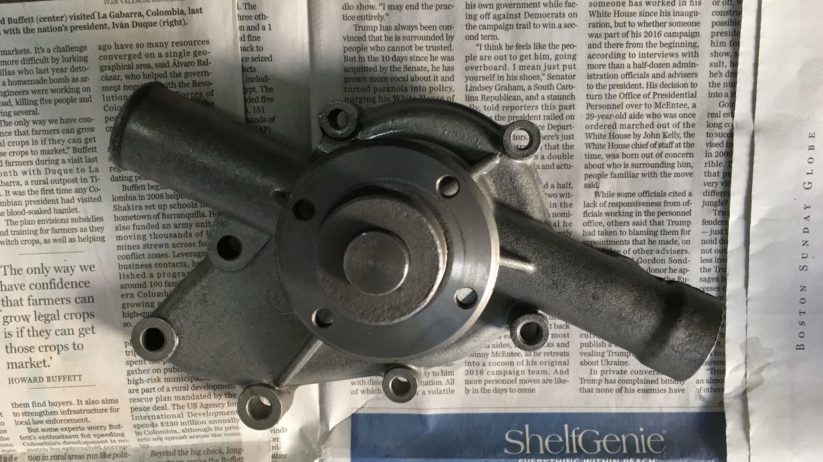Like you, I’m astonished at the speed with which our lives have changed in response to the coronavirus. It was just last Friday, March 13, when I drove down to a rural part of coastal Connecticut (Deep River) to play a gig. This in itself was surprising, since I don’t play a lot of shows, and professional-musician friends of mine who do were having their gigs cancelled right and left. But I contacted the venue (a small restaurant holding a benefit for a clean-water project in Southeast Asia), they said it was on, and there were only a handful of reported coronavirus cases in Connecticut, so I loaded up the car and drove on down.
It didn’t feel irresponsible; to the contrary, cancelling at the last moment would’ve felt so. What’s more, I nearly combined the trip with a run down to the Bronx to buy a very well-priced Martin M-38 guitar whose owner I’d been conversing with online for a week. My deciding not to follow through on that had far more to do with not wanting to turn four hours of driving into closer to nine than it did the rising number of virus cases in New York. I joked with my wife, Maire Anne, that every zombie movie starts with a virus, and her borrowed Honda Fit may be great on gas but it’s a poor vehicle in which to survive the viral zombie apocalypse.
We both laughed. A day later, it was no longer funny.
It was that weekend—last weekend—that everything changed. By Monday, schools had been cancelled in Massachusetts, and everything nonessential began to shut down. Now, scarcely a week later, I’m ordering odds and ends from Amazon rather than risking a trip to Autozone or the hardware store, and I can’t believe that I was so cavalier as to drive four hours to play for tips in front of twelve people in a restaurant, and considered driving into the city to look at a guitar I don’t need. (Like any dyed-in-the-wool bargain-hunter, though, I do regret the missed opportunity on the Martin! :^)
It may be maudlin for me to go on about how fortunate I am to be sheltering in place with Maire Anne, or to still have income as a self-employed work-from-home writer, or to have a garage and a driveway full of cars that need my attention and thus provide both a diversion as well as actual productive work, but those things are true. However, it is all alarming and surreal.
The jumping of my train of thought from, “Should I finish the water-pump installation on Hampton, the 48,000-mile ’73 2002?” to “Maybe selling Hampton this spring isn’t such a good idea after all—I mean, how many people will actually be buying vintage cars at the height of the COVID-19 pandemic?” to “How many people have died in Massachusetts today?” is more than a little head-spinning, but such is the nature of trying to maintain a sense of normalcy in completely abnormal circumstances.
So what do you do? You go into the garage and finish the water-pump installation.
A little over a month ago, I wrote about yanking Hampton’s intermittently leaky water pump, being on the verge of installing a new Graf pump but balking at its clearly non-stock look and feel, installing a Cardone rebuilt original pump I had as a road spare, and finding that it had a bent flange. After some deliberation, I decided that due to Hampton’s low mileage and originality, it was worth sending the original ’73-date-stamped water pump to Flying Dutchman Water Pumps in Oregon. For about $135, they rebuilt the pump and shipped it back to me.

Normally I wouldn’t care about an original date stamp you can’t see, but for a 48,000-mile 2002, I make an exception.
The pump rebuilder recommended that I give the pump a coating of clear high-temperature primer to protect the freshly-sandblasted aluminum housing from corrosion. Normally I don’t do things like this, but it seemed like good advice, so I followed suit.

Clear-coated it is.
I then cleaned the sealant off the engine from the aborted Cardone pump installation, and mounted the freshly-rebuilt pump.
I was about to mount the fan and re-install the alternator when I realized a few things. First, I remembered that the rubber bushings in the alternator were shot, causing it to cock forward on the bracket; I’d be an idiot to install it without changing the bushings. Usually, on a vintage BMW that I’m going to drive any distance, if there’s any issue at all with the alternator or regulator, I bite the bullet and install a two-wire internally-regulated alternator, since it eliminates the trouble spots of the ancient mechanical external voltage regulator and the three wires and six connectors between it and the alternator, but Hampton’s originality demanded that I keep the original alternator and regulator configuration. I had a set of bushings in the garage, so in they went.
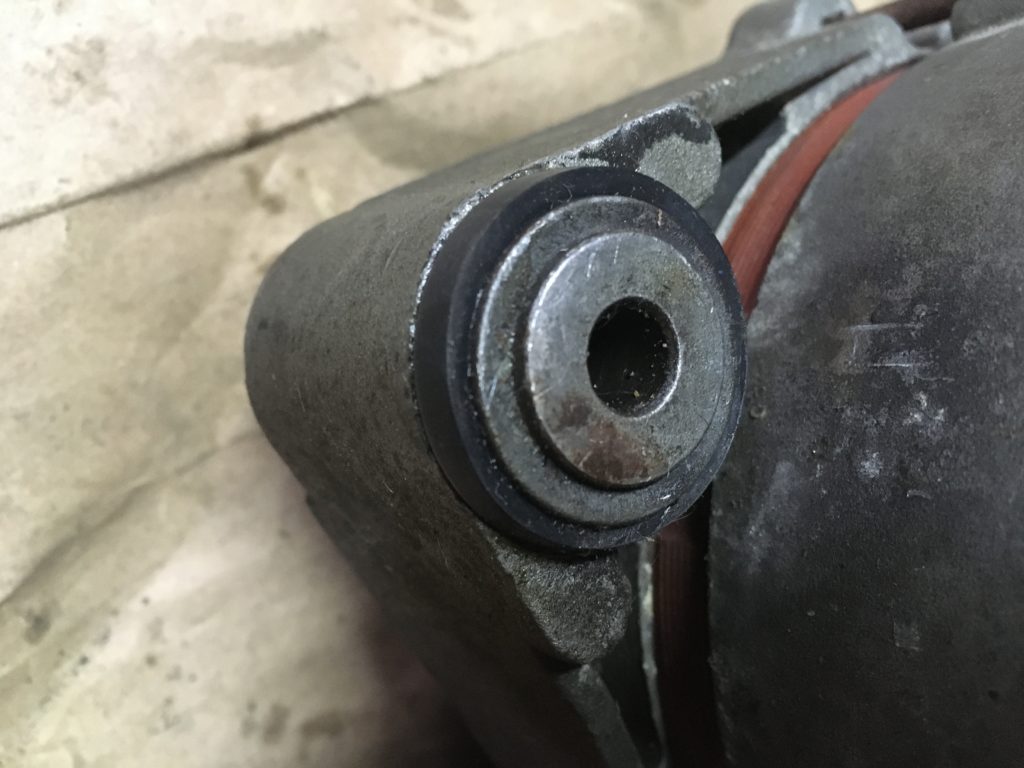
Yum: fresh alternator bushings.
Next, as is the case with nearly every 2002, this one clearly had been leaking a little oil out the upper and lower timing covers for decades. While I have no intention of trying to fully detail the engine compartment and get it Q-Tip clean, I did want to tidy things up as much as possible, and cleaning the timing covers is easier with the fan off (yes, it’s even easier with the water pump out, but all I could do was kick myself for having allowed that ship to sail). In the photos below, that silver pipe is the car’s EGR plumbing, remarkably still intact— and right in the way of what I wanted to clean.
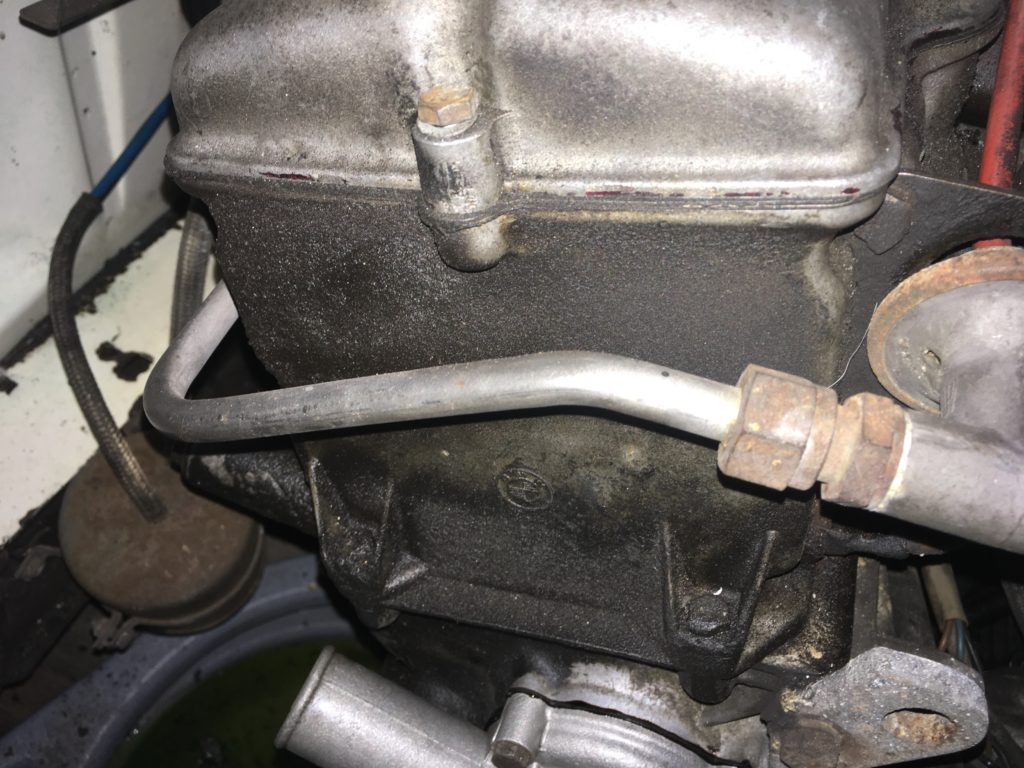
Before cleaning.
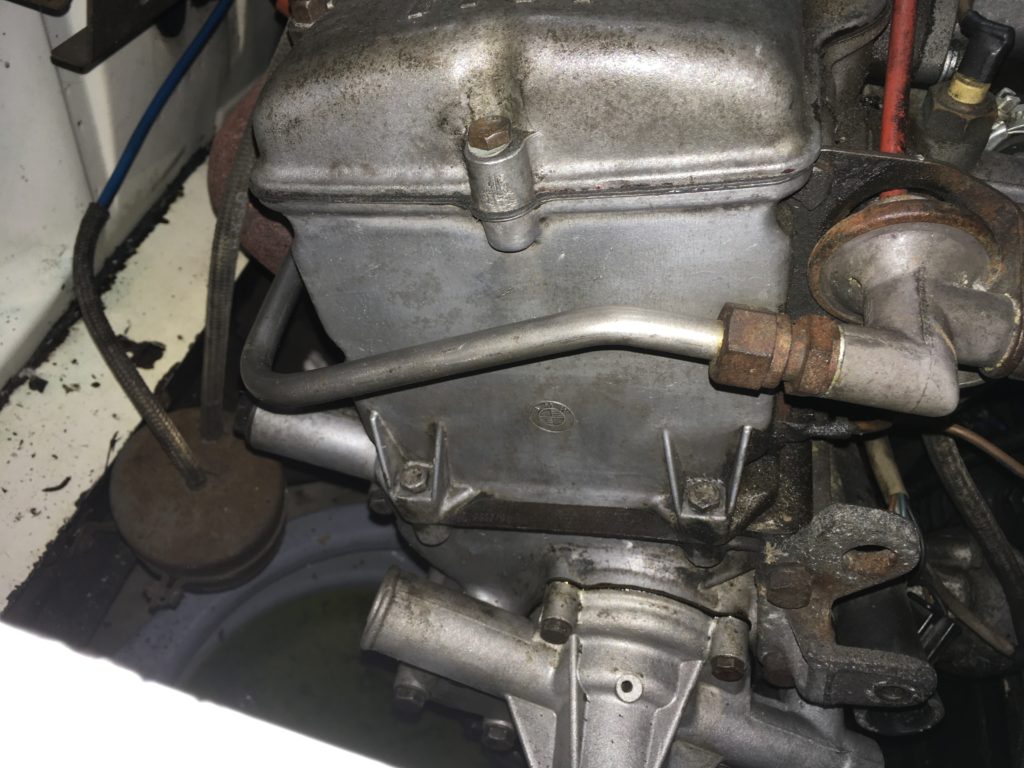
After.
At this point, having achieved the goal of cleaning an area that was easier to get at before the fan was put back on, given the choice between continuing to clean adjacent areas or buttoning up the water pump and alternator re-installation, I opted for the latter.
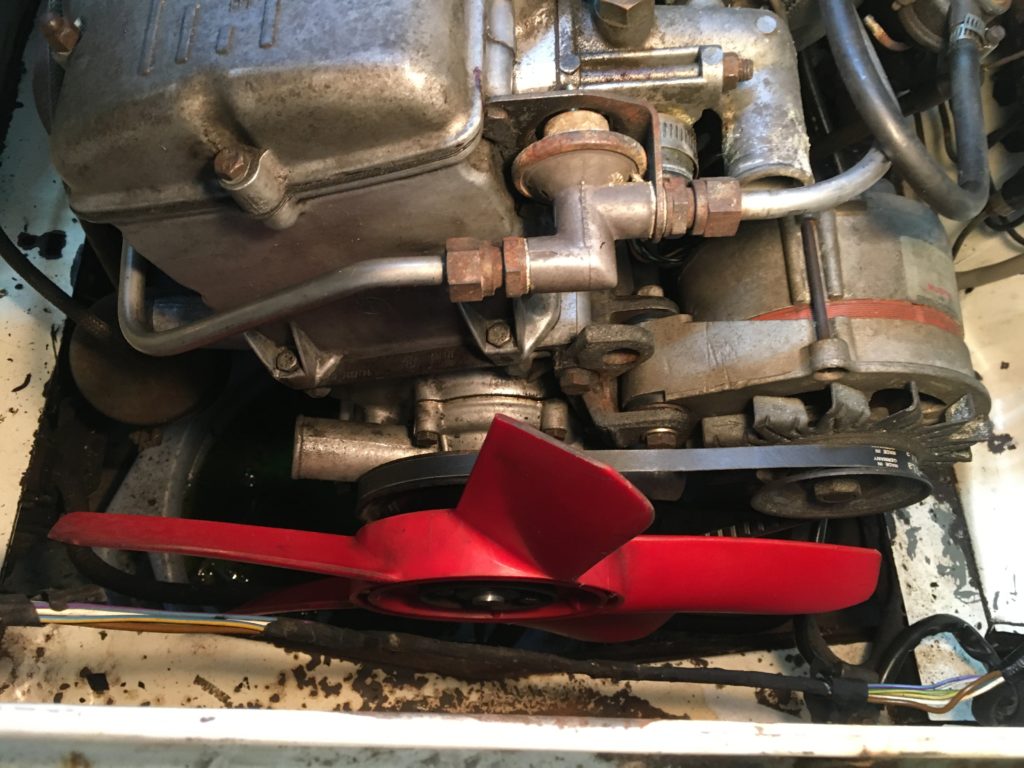
Reassembly is good.
The next step is to put the radiator back in, but before I do that, I need to make a decision on whether or not to address and treat the minor surface rust on the step of the nose. You can sort of see it in the photo above, but here’s a better image:

A little surface rust on the step inside the nose where the radiator sits: To treat or not to treat?
If I were keeping the car, I’d wire-brush this area, then treat it with a rust converter like Loctite Extend or Rustoleum Rust Reformer and leave it at that. However, on a car like Hampton, I need to be careful. As I described here, a few months ago I pulled out Hampton’s battery tray in order to clean the black waxy Ziebart undercoating that was everywhere in the engine compartment, including under the battery tray. The tray, like that of every other old car, was corroded by battery acid. While it was out, it seemed silly not to pay the $30 to get it sandblasted, and with it blasted, I had to prime and paint it, and it seemed silly not to paint it the correct color of the car, so I ordered a spray can of Code 085 Chamonix paint. However, due to a number of factors (color matching, the yellowing of the paint in the engine compartment from heat, chips and surface rust in the nearby areas), the repainted battery tray stands out in a way that I’d rather it didn’t. This shows that regarding the surface rust on the nose, the less that’s done, the better, unless it’s a full engine-out sandblast-and-paint of the engine compartment. My friend Gary York sent me some Chamonix paint he used on the resurrection of his gorgeous ’68 1600, but I think the smart money is on leaving it alone and leaving that decision up to the next owner.
So I think I’m just going to put the radiator back in. It’s only ten minutes of work to pull it back out if the need arises. Besides, there’s value in making Hampton mobile again. Mobile is good. Mobile gives options. It’ll let me pull the car in and out of the garage and swap cars around if need be.
Plus, there are few things simpler than a 2002. If Maire Anne and I need to escape the coming viral zombie apocalypse, at least we can travel in something that I can fix. And Hampton is, you know, classy.
Everyone stay safe.—Rob Siegel
Rob’s new book, Resurrecting Bertha: Buying Back Our Wedding Car After 26 Years In Storage, is available on Amazon here. His other books, including his recent Just Needs a Recharge: The Hack MechanicTM Guide to Vintage Air Conditioning, are available here on Amazon. Or you can order personally-inscribed copies of all of his books through Rob’s website: www.robsiegel.com.

